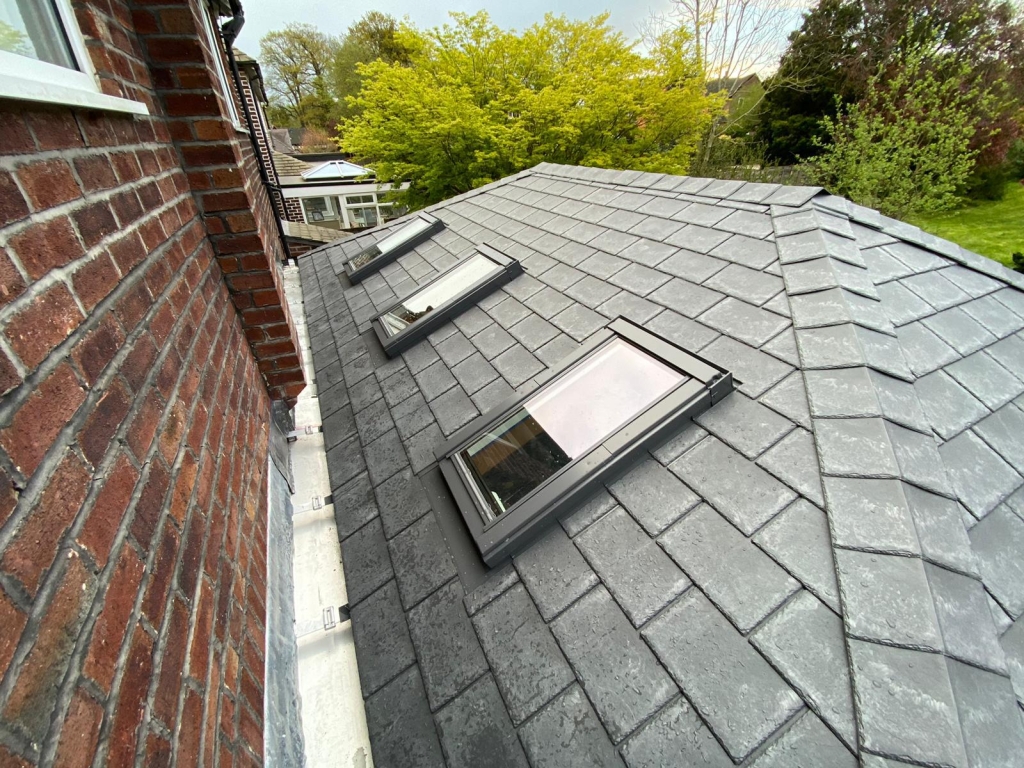Roofs in the UK are subjected year round to a variety of weather conditions. The constant exposure to weather conditions, from heavy rain and snowfall in winter to high winds and fluctuating temperature can wear down roofing materials. Over time, these environmental factors can lead to roof damage, and in some cases, replacement is the best solution. It is an expensive undertaking to replace a roof, but is necessary for the home’s structural integrity and to prevent future repairs. Knowing when to replace your roof, whether it’s leaking or old, is essential to protecting your home.
One of the first signs that a roof replacement may be necessary is visible damage such as missing tiles, sagging sections, or leaks that continue despite multiple repairs. In the UK, many homes have slate or tile roofs, and while these materials are durable, they are not immune to long-term wear. If you notice damp patches in the ceiling, mold growth or an increase in your energy bill, it could be a sign that your roof no longer provides adequate protection. Older roofs-those over 20 to 25 years-are more likely to need replacement. A professional roofer should inspect the entire area to determine any damages. A professional roofer can give you a comprehensive report that will help determine whether or not a full replacement or partial repair is needed. Roofs can be extended by regular maintenance, but they will eventually reach the end of their functional lifespan.
The right material for your roof replacement is important in the UK, because different materials offer varying levels of durability, cost, and insulation. Traditional slate is a popular choice for its classic appearance and long lifespan, but it can be expensive and heavy. Concrete tiles and clay tile are both common, and they can provide a balance of cost and performance. For those seeking a more modern option, composite or synthetic materials are becoming increasingly popular. They are lighter and easier to install. And they come with long-term warranties. The style of your house and the local planning laws will influence what you choose, especially if it is a listed or conservation property. Consulting with a roofing expert can help ensure that your new roof is both functional and compliant with local guidelines.

A professional roofer will first conduct a comprehensive inspection. The contractor will assess the extent of the damage and determine whether a full replacement is necessary or if repairs would suffice. The old roof materials will be carefully removed and any damages to the decking underneath the roof will be inspected. The underlying structure might need to be repaired before a new roof can be installed. Once the structure is secure, the new roofing materials are installed. This process can take several days, depending on the size of the roof and the complexity of the job. You should hire an experienced contractor with experience in the type of roofing you have. Different materials and designs will require different methods. To gather new details please look at www.roofadvisor.co.uk/how-much-does-a-roof-replacement-cost-in-the-uk/
The timing of the roof replacement project can have a major impact on its success. In the UK, the best time to undertake such work is during the late spring, summer, or early autumn months when the weather is generally more stable. Rain and wind can cause delays or complications, especially if large areas of the roof are exposed during construction. However, emergency replacements may be required at any time of year, particularly if a roof has suffered storm damage. Planning ahead and booking a contractor in advance can help avoid long wait times during peak seasons. The homeowner should make other logistical arrangements, including informing their neighbours of the upcoming construction, setting aside parking spaces for vehicles and planning for possible noise. With a realistic timeline and good communication, the replacement process can be managed with minimal inconvenience.
A roof replacement project is an important one that will protect a house’s structural integrity, increase its value and boost energy efficiency. UK homeowners must remain vigilant for signs of roof deterioration and act promptly to prevent further damage. With so many materials and contractors available, making informed decisions is vital to achieving the best results. When planning your project, it’s important to consider costs, schedules, and warranties. A well-executed replacement roof can bring peace of mind to homeowners for many years, whether it’s for aesthetic reasons or because the problem has been present for a long time. Investing wisely, working with professionals and working on a property that is attractive and safe will ensure the home remains dry and appealing, regardless of unpredictable British weather.
